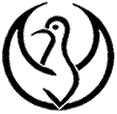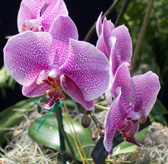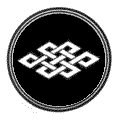 |
|||||||||||||
|
|
|||||||||||||
|
|
|||||||||||||
|
|
|
 |
|
|
|
|
||||||
|
Program 2
A multi-dimensional, eclectric blend of powerful,healing traditions for the treatment of chronic pain, stress and injuries in the cranium, presented in a 3 day intensive format. Training Dates in Denver, Colorado: Introductory Lecture - 2024 Dates to be announced (sign up to be contacted) For content, refer to syllabus below.
THREE SYSTEMS OF CRANIAL THERAPY ARE PRESENTED: **Neuromuscular Therapy for the Cranium **Sutherland/Upledger Cranio-Sacral Therapy **Fischer/Stone Cranial Mobilization The 3 systems of cranial therapy are then integrated into a 52 step protocal treatment plan There are 3 stages to Cranial Therpy--1) rehabilitation 2) core relaxation/normalization 3) rejuvenation/regeneration The cranium is the vital pattern setter for the entire body, a complex network of tissues, glands, muscles, tendons, ligaments, fascia, membranes, nerves, arteries, veins, capillaries and fluids. This is the wrapping of the primary control center for the body, mind, emotions, instincts and other functions that are yet unknown. This can be used a therapy by itself, or combined with deep tissue and other therapies to carry the work to an even deeper level. With the integrative approach, the prepartory work of releasing the myofascial system of the cranium before the more subtle work of cranio-sacral therapy is given, create a more powerful, synergistic effect, maximizing therapy time. The Cranial Mobilization of the Fischer/Stone tradition is a further enhancement for the over all balancing of the cranium.
INTEGRATIVE CRANIAL THERAPY HAS BEEN KNOWN TO BE HELPFUL IN MANY CASES OF: **slowing down the aging process **accidents, injuries, direct trauma **severe blows to any part of the body **headaches of all varieties: migraines, cluster, tension, sinus **sinus congestion, pain and infections **depression and other emotional problems **acute systemic infections **tinnitis, ear problems, ear pain, hearing loss **anxiety, hysteria, post-traumatic stress, insomnia **T.M.J. syndromes, jaw, face and scalp pain **whiplash and neck pain **learning disabilities as well as other disabilities such as austim, cerebro-palsy, attention deficit disorders, seizures, hyperkinesis, dyslexia and developemental delays **visceral dysfunctions such as ulcers, irritable bowel syndrome, asthma, irregular heart beat **vision problems, blurred vision, eye pain **can increase intuition, creativity and dreaming **assists a person in times of transition and change, helping to adjust to upheavels and turmoil **chronic pain syndromes of a wide variety **arthritis; rheumatoid and other joint disorders **low back pain and scoliosis **autonomic nervous system disorder: Raynaud's syndrome Integrative Cranial Therapy does not replace competent medical treatments, when needed. This therapy works in conjunction with skilled allopathic care. Those in severe pain are reccomended to work with their medical doctor as well as receiving regular Integrative Cranial Therapy 2023 Scheduled Dates (to be announced)
COURSE SYLLUBUS: 1) Cranial Neuromuscular Therapy: cranium, face, anterior neck corrugator, orbicularis oculi, sinus points and tapping, levator palpebrae superiorus, levator labii superioris, eye routine: superior rectus, superior oblique, lateral rectus, inferior oblique, and medial rectus; cranial aponeurosis, temporal plate and temporalis, superior sagittal sinus, auricularis--anterior, superior and posterior, external TMJ, masseters, external, medial and lateral pterygoids from the external, tendon of the sternocleidomastoid and digastric, mastoid and styloid process (styloglossus, stylopharangeus and stylohyoid muscles, stylohyoid and stylomandibular ligaments); tissues under the mandible, muscles of the face: zygomaticus minor and major, orbicularis oris, bucinator, mentalis, depressor labi inferioris, transversus menti, depressor anguli oris, side of nose; treatment inside of the mouth--internal masseters, internal medial and lateral pterygoids, tendon of the temporalis, tensor and levator palatini, muscles under the tongue--hypoglossus, chrondoglossus, styloglossus, and genioglossus; anterior neck; platysma, skin rolling,scalenes--anterior, medial and posterior, longus coli, sternocleidomastoid and advanced neck stretches. Sutherland/Upledger Standard Procedure: 1--Following/connect up 2--CV4 3--frontal lift, ethmoid release 4--parietal lift 5--temporal rocking and ear pull 6--sphenoid decompression 7--TMJ release 8--occipital wedge/decompression 9--dural tube traction 10)-- diaphragm release: respiratory and pelvic 11)--sacral release and treatment 12)-- feet: connecting with grounding Fischer/Stone 12 step cranial protocol: 1) hyoid/clavicular complex 2) mandible 3) occiput 4) contour of the cranium 5) lamboidal suture 6) temporal-parietal suture (squamous suture) 7) superior saggital suture 8) frontal bone 9) temporal bone: mastoid process and TMJ 10) maxillae 11) optic foramen 12) occipital cradle The three systems of cranial work are presented in a 52 step protocal treatment plan, on the third day of the training |
||||||
 |
|||
|
Taught by Peggy Daugherty ND, who has 46 years of professional experience and specializes in the treatment of pain, stress and injuries to the cranium Contact her for more information In Negril, Jamaica at: |
|
|
|
|
| [Home] [Instruction] [Styles] [Sessions] [Instructor] [Contact] |
|
Copyright 2024 For more information please contact: peggyd@manual-medicine.com |





